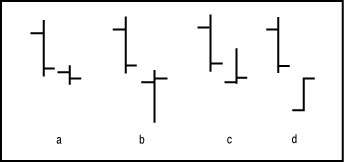The Battle Rages On
Using Volume To Detect Shifts In Power
by Vadim Gimelfarb
Who has control: The bulls or the bears?
Volume plays an important part in stock market dynamics. However, the kind of information that triggers the volume increase or decrease accompanying price changes is much less evident.
VOLUME VS. PRICE
To use as examples, I can point to two articles in the January 2004 STOCKS & COMMODITIES. One, written by D.W. Davies, is based on Joseph Granville's classic approach and describes the use of on-balance volume in daytrading. The thesis of this approach is that volume increase confirms and often precedes price increase, while a decrease in volume signals a high probability of a slowdown in the price increase and the possibility that prices will reverse. According to Granville, an increase in volume reflects the accumulation process, which is a prerequisite for an increasing trend to be stable.
Anthony Trongone, the author of the other S&C article, notes that contrary to the classic theory, his observations for short-term periods show that a volume increase accompanying price growth is likely to be a bearish signal, while a decrease in volume during price growth is bullish. At the same time, volume growth during price decrease indicates a likely change in direction, while volume decrease suggests a continuation. This, in general, is in accord with Granville's theory.
The explanation of a volume change influencing price dynamics from the accumulation/distribution point is not universal. These processes are long term and cannot serve as a reference for taking decisions in short-term trading, which more and more traders are finding attractive.

Figure 1: Price development. Here are the different types of bearish and bullish resistance.
...Continued in the November issue of Technical Analysis of STOCKS & COMMODITIES
Excerpted from an article originally published in the November 2004 issue of Technical Analysis of STOCKS & COMMODITIES magazine. All rights reserved. © Copyright 2004, Technical Analysis, Inc.
Return to November 2004 Contents